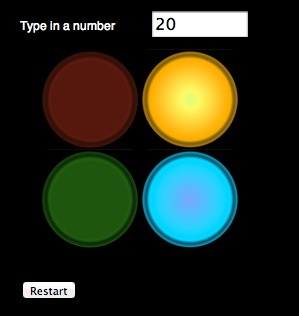Charlies Delightful Machine: Difference between revisions
m (NRICH autmated edit) |
No edit summary |
||
| (One intermediate revision by one other user not shown) | |||
| Line 7: | Line 7: | ||
|tagline= Here is a machine with four coloured lights. Can you develop a strategy to work out the rules controlling each light? | |tagline= Here is a machine with four coloured lights. Can you develop a strategy to work out the rules controlling each light? | ||
|image=NRICH7024.jpg | |image=NRICH7024.jpg | ||
|content= | |content=Students enter numbers one at a time into Charlie's coloured lights machine. Each light is controlled by a rule, and if a number satisfies the rule, the light will go on. Students attempt to uncover the rules, with some numbers possibly turning on more than one light! | ||
|strategy= | |strategy= | ||
|topic= Algebra | |topic= Algebra | ||
| Line 26: | Line 26: | ||
|acknowledgement={{NRICH_acknowledgement}} | |acknowledgement={{NRICH_acknowledgement}} | ||
|status=draft | |status=draft | ||
|final= | |final=yes | ||
}} | }} | ||
Latest revision as of 22:41, 4 February 2015
Problem, Clue, Solution, Teachers' note
Lesson idea. Students enter numbers one at a time into Charlie's coloured lights machine. Each light is controlled by a rule, and if a number satisfies the rule, the light will go on. Students attempt to uncover the rules, with some numbers possibly turning on more than one light!
Teaching approach. This lesson idea is about working systematically(ta).
The collection of NRICH activities are designed to develop students capacity to work as a mathematician. Exploring, questioning, working systematically, visualising, conjecturing, explaining, generalising, justifying, proving are all at the heart of mathematical thinking.
This particular resource has been adapted from an original NRICH resource. NRICH promotes the learning of mathematics through problem solving. NRICH provides engaging problems, linked to the curriculum, with support for teachers in the classroom. Working on these problems will introduce students to key mathematical process skills. They offer students an opportunity to learn by exploring, noticing structure and discussing their insights, which in turn can lead to conjecturing, explaining, generalising, convincing and proof.
The Teachers’ Notes provided focus on the pedagogical implications of teaching a curriculum that aims to provoke mathematical thinking. They assume that teachers will aim to do for students only what they cannot yet do for themselves. As a teacher, consider how this particular lesson idea can provoke mathematical thinking. How can you support students' exploration? How can you support conjecturing, explaining, generalising, convincing and proof?. (edit)
| Resource details | |
| Title | Charlie's Delightful Machine |
| Topic | |
| Teaching approach | |
| Learning Objectives | Working systematically |
| Format / structure | |
| Subject | |
| Age of students / grade | |
| Table of contents | |
| Additional Resources/material needed | |
| Useful information | |
| Related ORBIT Wiki Resources |
|
| Other (e.g. time frame) | |
| Files and resources to view and download | The following parts are available: Problem, Clue, Solution, Teachers' note. The original problem is available on the NRICH website here. |
| Acknowledgement | The NRICH website http://nrich.maths.org publishes free mathematics resources designed to challenge, engage and develop the mathematical thinking of students aged 5 to 19. NRICH also offers support for teachers by publishing Teachers’ Resources for use in the classroom. |
| License | CC-By, with kind permission from NRICH. This resource was adapted from an original NRICH resource. |

